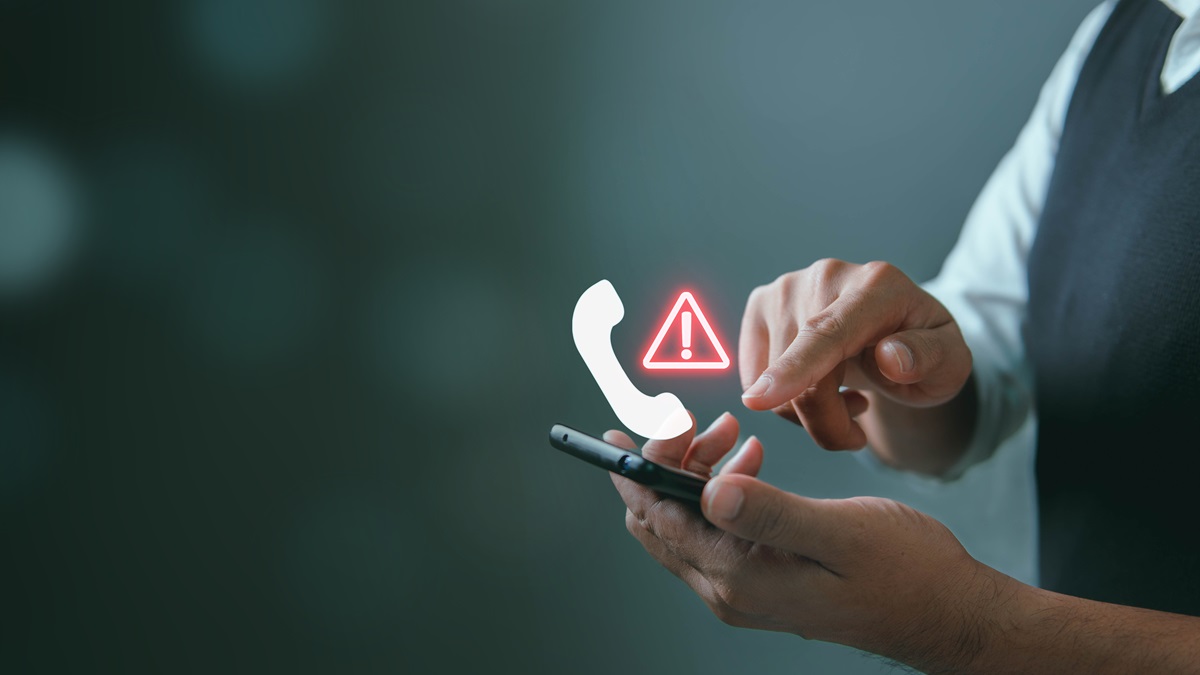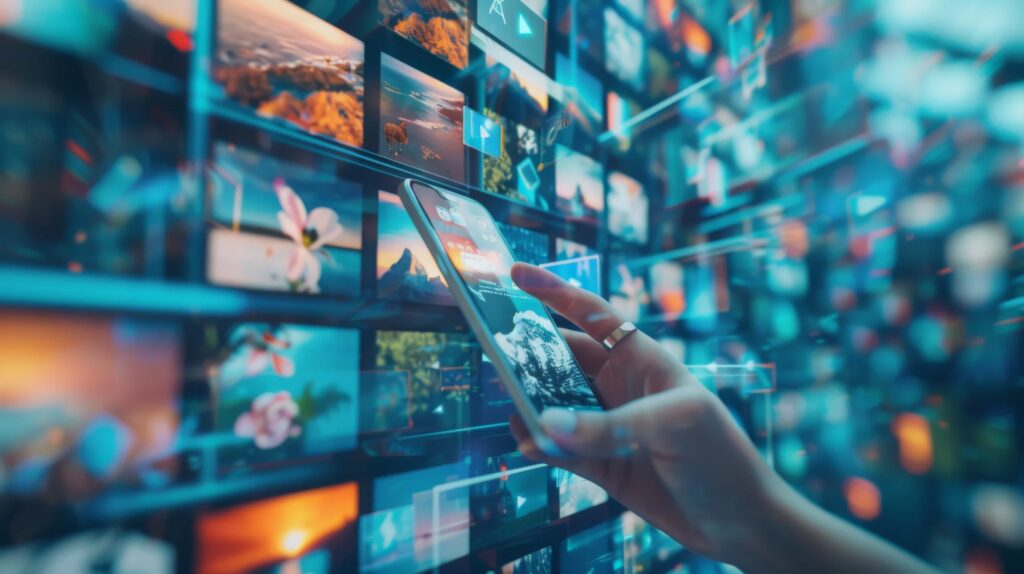Accidentally deleted? Recover it now! Discover the top 4 apps for image recovery

Photo recovery apps are essential tools for anyone who has ever lost important images. In this article, we explore the best options for you.
Find out how these apps work and their main features. Keep reading and find your images efficiently!

Apps to Remove Viruses from Cell Phones
Protect your cell phone with the best apps to remove viruses safely.
How do photo restoration apps work?
Photo recovery apps scan your device's storage for deleted files. They access areas where deleted photos may still be located.
These applications use advanced algorithms to identify images that have not been overwritten. This increases the chances of recovery.
After scanning, the user can preview the recoverable photos and select which ones to save. The process is simple and can be done in just a few clicks.
Top 5 apps to recover photos
Check out our list of the best apps to restore deleted photos and discover their features.
1. DiskDigger
DiskDigger is a well-known photo recovery app. It has a simple and effective interface, allowing users of all skill levels to use it.
The application scans both internal memory and SD cards, offering deep recovery options to maximize the chances of success.
Additionally, it allows you to preview photos before restoring them, ensuring you choose exactly what you need.
DiskDigger is available for Android and iOS systems.
2. Dumpster
Dumpster acts as a recycle bin for your device, allowing you to recover deleted photos with ease.
One of the main advantages of Dumpster is that it automatically stores all deleted photos, providing an extra layer of security for your images.
Furthermore, the application allows you to restore files without the need for an internet connection, making it a practical and efficient tool.
Available only for Android system.
3. EaseUS MobiSaver
EaseUS MobiSaver provides a comprehensive data recovery solution covering photos, videos, contacts and more on Android, iOS, Windows and Mac devices.
One of the great advantages of this application is its intuitive interface, which makes the process easier even for less experienced users.
EaseUS MobiSaver also allows you to preview before restoring, so you can select only the files you want.
EaseUs is available for use on Android system only.
4. DigDeep Image Recovery
DigDeep Image Recovery is an intuitive application designed to scan both the internal and external storage of your device, making it easy to recover deleted photos.
One of the advantages of this application is its ability to perform deep scans, allowing even older images to be located.
Another interesting feature is the organization of files into folders, which makes it easier to navigate and select the desired images.
DigDeep Image Recovey also works only on Android system.
How to use the app to restore photos?

Losing your images can be frustrating, but the good news is there are several apps that can help you find them.
While each application has its own specifics, here are some general tips that can be applied in most cases.
Install and Configure the Application
- Secure Download: Download the app from a trusted source, such as your device's official app store.
- Permissions: Grant the necessary permissions so that the app can access your device's storage.
Follow the App Instructions
- Tutorials and Guides: Many apps offer tutorials or step-by-step guides to help you through the process.
- Intuitive Interface: Navigate through the application interface, which is generally designed to be intuitive and easy to use.
Perform Device Scan
- Full Scan: Start a full device scan to find deleted or lost photos.
- Search Filters: Use search filters, such as dates or file types, to make it easier to find photos.
Preview and Select Files
- Preview: Most applications allow you to preview the photos found before saving them.
- Selection: Select the photos you want to restore, checking them as needed.
Recover and Save Photos
- Storage Location: Choose a safe location to save your photos, such as a specific folder on your device or a cloud storage service.
- Backup: Consider backing up your photos to prevent future loss.
Keep the App Updated
- Regular Updates: Keep the app updated to ensure it works properly and has access to the latest improvements and bug fixes.
Consider Premium Version
- Additional Features: Some applications offer premium versions with additional features, such as recovering larger amounts of data or priority technical support.
- Assess the Need: Evaluate whether the extra features justify the investment, depending on the importance of the photos you want to recover.
Be patient
- Scan Time: The scanning process may take some time, especially if you have a lot of files on your device.
How to choose the best app to recover your photos: what to evaluate?
Choosing the right application to recover your photos can make all the difference in the efficiency and security of the process.
There are a few crucial factors to consider to ensure the app you choose meets your needs and protects your images.
The first thing to notice is the application interface.
An app with an intuitive interface makes the recovery process much simpler, avoiding technical complications that can frustrate the user.
In addition to the interface, other important aspects include:
- Data security: Make sure the app offers data encryption and has clear privacy policies. This prevents your photos from being compromised or accessed by third parties.
- Available recovery types: Some apps only recover recently deleted photos, while others can recover images from damaged devices or SD cards.
- Compatibility: It is essential to ensure that the app is compatible with your device's operating system, be it Android or iOS, to avoid issues during the recovery process.
- User reviews: Read reviews from other people who have used the app to better understand its effectiveness and reliability.
Therefore, choosing the best application should be based on factors such as security, ease of use, and the ability to recover different types of files.
Prioritizing these elements ensures that you can restore your photos safely and effectively, meeting your expectations.
Advantages and disadvantages of using free vs. paid apps

When choosing between free and paid photo recovery apps, it's important to weigh the advantages and disadvantages of each option.
Free apps are affordable and often cater to those who need to restore a limited number of photos without cost.
On the other hand, paid applications, although they require an initial investment, offer more complete functionalities.
Check out the main advantages and disadvantages below:
Advantages of free apps:
- Accessibility at no cost: ideal for those who don't want to spend money and have a small number of photos to recover.
- Ease of access: widely available in app stores.
- Basic Efficiency: Works well to recover recently deleted photos.
Disadvantages of free apps:
- Limited functionality: May not recover older images or images from damaged devices.
- Restricted attempts: Some apps limit the number of photos that can be recovered at one time.
- Ads: The presence of ads can interfere with the user experience, making the process slower.
Advantages of paid apps:
- Advanced features: Provides recovery of complex and long-term files.
- Support and Backup: More user support options and backup capabilities.
- Precision: ensures more effective and faster recovery.
Disadvantages of paid apps:
- Cost: they require financial investment, which can be disadvantageous for those who only need to recover a few photos.
- Complexity: Some paid apps may have more complex interfaces, requiring more time to learn how to use them.
- Licensing: Many paid apps require subscriptions or one-time purchases, which may be unnecessary if you only need a one-time recovery.
The choice between free and paid apps depends on the severity of data loss and the importance of the photos.
For essential files or more complicated situations, it is worth considering a paid app to ensure recovery with greater security and efficiency.

How to Stop Receiving Unwanted Calls
Learn how to stop receiving unwanted calls with our tips and app recommendations.
How to ensure privacy when using photo recovery apps
Privacy when using photo recovery apps is a crucial issue, especially since you will be dealing with personal and possibly sensitive images.
When using an app to restore your photos, it is essential to follow some practices to ensure that your information and files are protected.
First of all, choose an app that has good security ratings and is widely recognized in the market.
Make sure it offers data encryption during the recovery process, which ensures that your photos will not be accessed by third parties or stored on insecure servers.
Please read the app's privacy policy carefully to understand how your data will be handled.
Another important tip is to avoid using public Wi-Fi networks during the recovery process.
Public connections are more vulnerable to attacks, and any data transferred may be intercepted. Whenever possible, use private, secure networks.
Also, be wary of apps that ask for excessive or unnecessary permissions, such as access to your contacts or location.
Limit permissions to only what is strictly necessary for photo recovery.
In short, following good security practices, choosing trustworthy apps, and monitoring the permissions granted are essential measures to ensure privacy when recovering your photos.
Differences Between Recovering Photos and Restoring Videos: What to Know
While recovering photos and restoring videos may seem like similar processes, there are some significant differences between the two operations.
One of the main factors is file size.
Videos, because they are generally larger, require more time and processing power to restore, which can make the process slower and more difficult than that of photos.
Additionally, the complexity of the video file can complicate recovery.
A video is composed of multiple frames and audio layers, which makes the restoration process more intricate.
Some recovery apps can handle photos well, but may not have the features needed to restore full videos with quality.
This is especially true for high-definition videos, which may suffer quality loss during recovery.
Another important point is fragmentation.
While photos are usually saved continuously on your device's storage, videos can be fragmented across different parts of your disk, making a complete restoration even more difficult.
Therefore, video recovery is more technically demanding and may take longer.
Choosing the right app that supports video files is essential to ensure successful recovery.
How to avoid losing your photos again?
Protecting your photos from future loss is essential to preserving your important memories and data.
Fortunately, there are several preventative measures you can take to ensure your photos are always safe.
One of the first recommended actions is to set up automatic backups on platforms like Google Photos or iCloud.
This allows your images to be automatically saved to the cloud, ensuring their safety even if your device is damaged or lost.
Some practical tips to avoid losing photos include:
- Automatic cloud backup: Use services like Google Photos or iCloud to automatically sync your photos, keeping a backup copy always available.
- Backups on physical devices: Store your photos on external hard drives or memory cards as an additional measure, ensuring that you do not rely exclusively on online services.
- Regular organization: Delete duplicate or unnecessary photos periodically. This not only frees up space, but also makes it easier to manage your images, reducing the risk of accidentally deleting important photos.
- Protect your devices: Use protective covers and films to prevent physical accidents from compromising your smartphone or tablet, preserving stored photos.
By adopting these security and organization practices, you'll be better prepared to prevent photo loss in the future.
This way, your images will always be safe, accessible and ready to be remembered.
What to do if a photo recovery app doesn't work?

When a photo recovery app doesn't work as expected, there's no need to panic.
There are several alternatives that you can explore before giving up on recovering your valuable images.
The first step is to check whether the application you are using offers technical support or a help forum.
Often times, simple issues like permissions not being granted or running out of storage space can be fixed with additional instructions.
Here are some practical tips for dealing with this situation:
- Check permissions: Make sure the app has all the necessary permissions to access your files and perform recovery.
- Confirm storage space: Many apps need free space to save recovered files. Make sure your device has enough space.
- Try another app: If the first app doesn't work, try others, as each app uses different algorithms and may be more effective for certain file types or devices.
- Consider professional services: If the apps don't work, you can turn to data recovery services. They use advanced tools that can handle more complicated situations, such as damaged devices.
So if one recovery app fails, take your time to explore other options.
Do not try multiple processes in a row without understanding what is happening, as this may make the situation worse.
By exploring these alternatives carefully, your chances of recovering your photos increase considerably.
Recovering Old Photos from Broken Devices: Is It Possible?
Recovering photos from broken devices may seem like an impossible task, but depending on the condition of the device, there may be chances of success.
If the problem is only with the screen or external parts like buttons, it's likely that the data on your device, including your photos, is intact.
In these cases, connecting the device to a computer via a USB cable may allow access to images and data, even with a broken screen.
However, if the device won't turn on or has suffered more serious damage, such as hardware or operating system issues, the process becomes more complicated.
An alternative would be to remove the memory card (if the device has one) and insert it into another device to try to recover the photos.
Often times, photos stored on SD or microSD cards can be recovered even if the device itself is damaged.
In more extreme cases, such as significant physical damage, recovery may require the intervention of data recovery specialists.
These professionals have equipment that can access data directly from the device's hardware, such as the internal disk, even if it is broken.
In short, it is possible to recover photos from damaged devices, but success will depend on the severity of the damage and the strategy used to access the data.
How to restore old photos that have lost quality
Old or blurry photos can lose quality over time due to a number of factors, such as degradation of the digital file or low original resolution.
However, there are ways to restore these images and improve their appearance without the need for specific applications.
One of the main techniques for restoring old photos is the use of image editing software, such as programs that offer contrast, brightness and sharpness adjustments, which can help correct imperfections.
Another important point is the resolution of the photo. If the original image was scanned in low quality, enlarging it may cause pixelation and loss of detail.
In this case, the ideal is to scan the photo again, using a high-resolution scanner to capture more details.
Additionally, if the photo was taken with a low-quality camera, it is possible to use upscaling tools, which increase the resolution without compromising sharpness as much.
Blurry photos can also be enhanced using editing techniques, such as sharpening filters or even artificial intelligence.
Today, many tools apply AI to identify blurry areas and automatically correct them.
In conclusion, restoring old photos that have lost quality requires a little patience and the right tools.
With the editing resources and technology available, it is possible to recover much of the original sharpness and quality.
How Artificial Intelligence is Revolutionizing Photo Restoration
Artificial intelligence (AI) is transforming the world of photo recovery and restoration in dramatic ways.
Traditionally, the process of restoring old or damaged photos was manual and required advanced image editing skills.
However, with AI, many of these processes are being automated, delivering surprisingly fast and accurate results.
One of the main ways AI is revolutionizing photo restoration is through pattern recognition.
Intelligent algorithms are able to identify details in images that have been obscured by damage, such as scratches, smudges or blur.
AI can automatically fill in these gaps based on patterns learned from millions of other images, resulting in convincingly restored photos.
Additionally, AI is being used to upsample old, low-quality images.
AI-based upscaling tools can enlarge photos without causing pixelation or loss of sharpness, improving the quality of the final image.
Another important application is the colorization of black and white photos.
AI can analyze elements of an old image and apply realistic colors based on its composition, bringing new life to photos that were previously just monochrome.
With artificial intelligence, photo restoration is becoming more accessible and effective, allowing anyone, regardless of their editing skills, to recover and enhance their photographic memories.
Key Points: What You Need to Remember
- The applications scan the storage searching for deleted photos that have not yet been overwritten, offering an efficient way to restore your images.
- Applications like DiskDigger, Dumpster, EaseUS MobiSaver, DigDeep Image Recovery and PhotoRec are great options for recovering lost photos quickly and safely.
- When selecting an app, evaluate the interface, the security, the recovery type offered and the reviews from other users to ensure the effectiveness and protection of your data.
- Free apps offer accessibility, but with limited features. Paid ones provide greater efficiency and support, being indicated for more complex cases.
- Use only apps reliable, with encryption and clear policies security. Avoid unnecessary permissions and the use of public networks.
- Recover videos can be more time-consuming and complex due to the size of the files and their fragmentation on the device, requiring more robust apps.
- Do automatic backups in the cloud and keep physical copies on external hard drives to ensure the safety of your photos.
- It is possible extract photos devices with screen problems or use specialized services in cases of more serious damage.
- THE AI is revolutionizing photo recovery by improving the resolution, coloring old images and correcting defects automatically.
Discover apps to clean your cell phone
Finding lost photos is easier with specialized apps. So, choose a reliable app, follow the instructions and recover your precious memories.
Each app has its own quirks, but these general tips will help you navigate the process. Install, configure, scan, and save your photos safely.
And if you want to optimize your cell phone usage even further, check out the apps to clean memory, free up space and improve performance in our next post.

Cell Phone Cleaning Apps
Is your phone slow? Discover apps to clean your phone and free up space quickly. Check out the best options!




